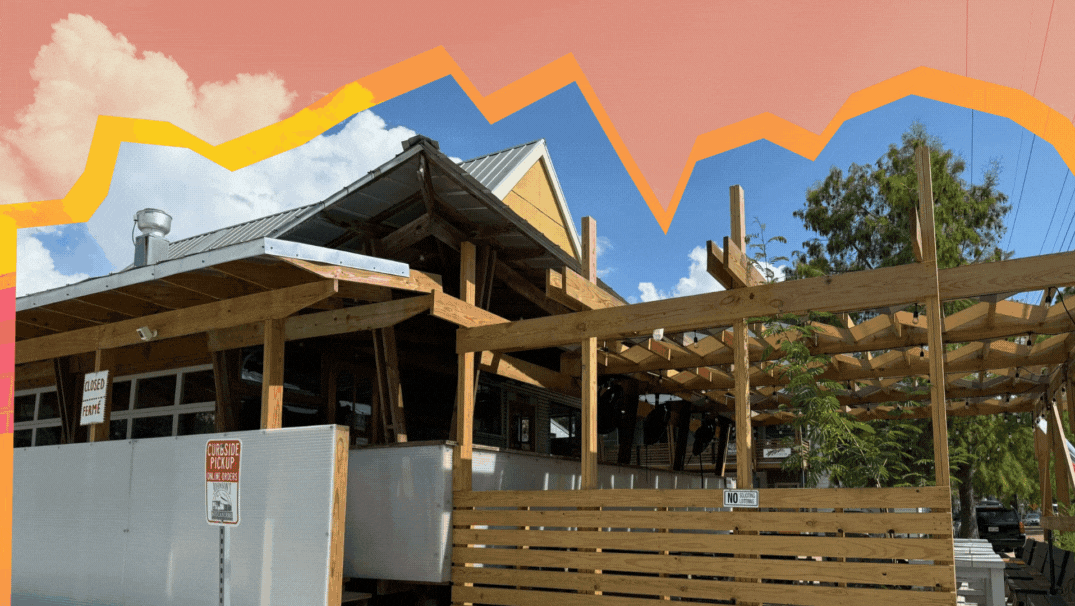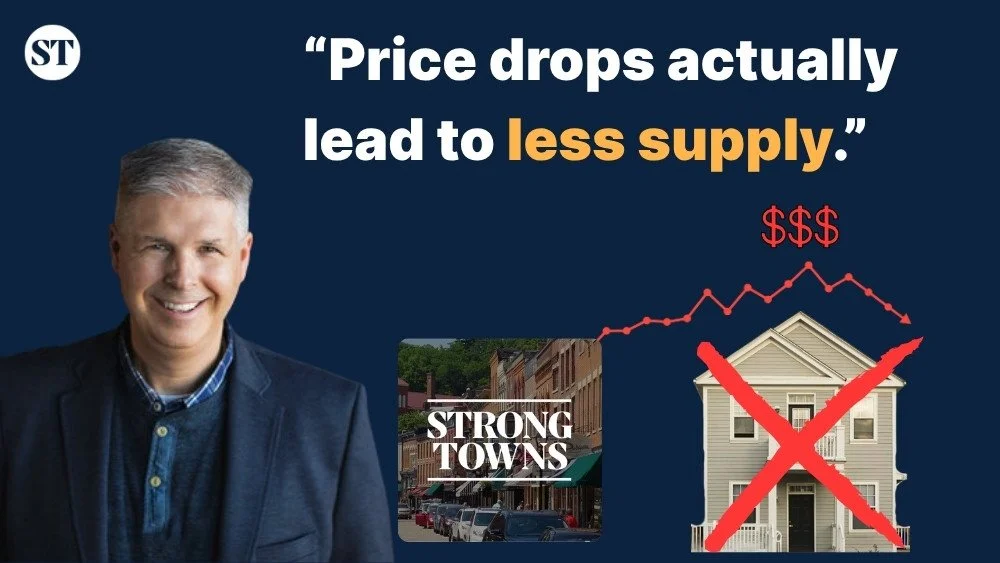Undoing the Downtown Monoculture
(Source: Alex Sawyer on Unsplash)
When I graduated from high school, an older and wiser woman in my life gave me a copy of the children’s book The Big Orange Splot. The plot is pretty straightforward: the central character, Mr Plumbean, lives on a “neat street” where all the houses are the same. One day, a seagull drops a bucket of paint on his roof, making a big orange splot. To the great dismay of his neighbours, Plumbean not only doesn’t get rid of the splot, he uses it as the starting point for a total makeover of his home and yard. When he’s done, his home is playful and colourful and “looks like all my dreams.” As the neighbours take turns trying to convince him to come to his senses, he persuades them to let their imaginations guide their own renovations. By the end of the story, the street is lined with fantastically unique homes that reflect the personalities, preferences and dreams of the people who live there. I hung onto it all these years and now read it with my kids.
I can see now that this book - a funny and memorable story about conformity and individuality - was a great gift for a young person just beginning their adult life and finding their way in the world. In its own way, it’s also a story about monocultures: how we’re drawn to them, how little it takes to disrupt them, and also the rewards we can reap when we dare to do so.
I thought of this the other day, as I read a news article about ongoing tensions between downtown employers and their employees who want to continue with some amount of the remote work they began doing during the Covid-19 pandemic. The article looked at how the ecosystem of downtown businesses that were supported by a customer base of office workers has been disrupted. Only a fraction of this customer base has returned, and they have more unpredictable buying patterns.
An HR recruiter who had consulted with downtown employers noted that “As a business owner, they don’t really want the weight of Winnipeg’s downtown on their shoulders as they’re making these decisions.” Oof. The weight of Winnipeg’s downtown on their shoulders? That’s a burden with pretty significant stakes!
The sentiment is also felt by the workers themselves. As one put it, “To bring me back to the office just so I can spend money and can help our local downtown… I kind of feel like it’s pushing me.” Another said she wanted to support local businesses but that it just isn’t feasible to spend money every time she comes to work.
If supporting downtown businesses was really just a matter of getting workers back for the Monday to Friday, 9-to-5 grind, then maybe it would just take time, or dangling the right incentives. But the reality is that office-district downtowns were already vulnerable before the pandemic.
To be fair, a downtown office district isn’t the only monoculture that we need to undo. The post-war North American development pattern was all about separating uses. Houses in one spot, office towers in another, stores still elsewhere. Over the decades, we’ve just kept digging ourselves further into this idea—think “entertainment districts” and “power centres” of big box stores.
Helping our downtowns to become stronger and more resilient is particularly important, though. Not only are they the symbolic heart and soul of the city, they’re also the economic centre. John Pattison puts it well here:
“A struggling downtown bodes poorly for everyone in the community. Value-per-acre analyses show that a walkable downtown—even a neglected one—can be far more financially productive than the ring of big-name big box stores on the outskirts of town. Downtowns are also, historically, where people have come together. One of the questions on the Strong Towns Strength Test goes like this: “If there was a revolution in your town—or a protest, parade, festival, or town emergency—would people instinctively know where to gather?” Even after decades of the Suburban Experiment, which hollowed out so many of our cities, the answer is still the same: downtown.”
How do we “de-monoculture” downtown? It really all comes down to people.
A downtown for people who already live there
It’s not about starting over, it’s about starting from where you are.
The first thing that is really important to understand is that there are people already living downtown. Rather than trying to guess what might make people want to come back downtown, we should focus on the people who are already there. What do they want and need?
I read with interest Edmonton, Alberta’s new Downtown Pedestrianization Plan. In consulting the community, they did do some broad city-wide engagement, but the primary focus was on learning from downtown residents and supporters of Paths for People, a non-profit that advocates for viable active transportation options. The plan calls for many people-oriented improvements that make it safer and more pleasant to be outside a car. Themes include better accessibility for people with disabilities, reducing conflicts between transportation modes, and expanding the tree canopy, among many others.
In my city’s downtown, there are a lot of people struggling with poverty, mental health issues, addictions and homelessness. Safety and perceptions of safety—for everyone, including the folks who are struggling themselves—is something that can’t be ignored. One community-led bottom-up response has been the Community Safety Host program, a social enterprise that trains certified security guards and gives them additional skills in de-escalation and trauma-informed care. The hosts bring much-needed cultural knowledge support to downtown libraries, clinics and shelters.
A downtown with a diverse economy
The University of Toronto’s School of Cities has been tracking the post-pandemic recovery of downtowns in the US and Canada. Their research has found that not all downtown industry sectors are created equal. Cities that had a big concentration of professional services or information/knowledge sectors downtown have been slow to bounce back. But according to researcher Karen Chapple:
“Conversely, if cities specialized in education or public administration, or healthcare sectors, though they shut down early in the pandemic they came back quickly. Where there are essential workers that have to be onsite, you have a lot of activity. If your downtown had these sectors, then you did really well.”
Chapple notes that more non-profits and arts organizations, where more people are likely to be present at work, can help too.
Just by increasing the diversity of industry sectors, we can help make downtown less fragile and more resilient. But it’s also an opportunity to bring in the types of organizations and employers that provide the necessary ingredients for places where people want to live and have access to nice things. These sorts of sectors are key to creating the culture and community that are so vital to the human habitat and become part of the fabric and character of a neighbourhood.
There’s always a temptation to try to stand out through specialization, to be “the” place for a particular industry (think "tech hub"). We still haven’t learned that specialization can be a type of monoculture itself!
A downtown with housing for all
More downtown housing is the key to having more people downtown, period. The appeal (and complications) of converting excess office space into housing gets a lot of headlines, but there is so much more we can do to help more people live downtown.
As always, diversity is the key. We need housing for everyone: for students, families, seniors, newcomers, life-long residents, folks with disabilities who need accessible homes, unhoused people and those at risk of becoming homeless. And one type of home does not fit all! We need homes to buy and homes to rent, affordable housing and market housing, studios and homes with multiple bedrooms.
We have to move past the expectation that mega-projects, housing or otherwise, will save downtown. Rather, we need to look for the next smallest steps we can take to facilitate and encourage new housing. One simple but critical thing we can do is eliminate parking minimums, which can make or break any project. (To say nothing of all the potential space for housing that exists in the form of surface parking lots!)
One great example of community-informed downtown housing here in Winnipeg is a village of 22 supportive tiny homes called Astum Api Niikinaahk. And in Vancouver’s Downtown Eastside, Japanese Canadian and Indigenous organizations have teamed up to establish a community land trust that will provide affordable community-owned housing.
There’s so much need for housing, that it’s tempting to think that big projects that provide hundreds of units must be the solution. At face value, the examples I mentioned above may seem like tiny drops in the bucket that can’t possibly make a difference. In fact, they’re creating the foundation of a strong place—meeting local needs, and built from the bottom up by many hands.
A downtown that’s a true neighbourhood
North American downtowns weren’t always this way—monocultures of offices that empty out at night and on weekends, or during pandemics. Relying on the disposable incomes of office workers, big festivals once or twice a year, or shiny new mega-projects to sustain and revitalize them hasn’t worked out well so far. Through lots of small actions and by trying new things, we can help downtowns return to what they’ve always been intended to be: true neighbourhoods, ones that look like all our dreams.
For more discussion on this topic, be sure to check out this episode of Upzoned.






Emma Durand-Wood likes walkable cities, front porches, street trees, bumping into neighbors, riding her bike, downtowns, and any excuse to check out a new coffee shop, bakery, or shop. A Winnipegger by choice, she lives in Elmwood with her husband and three children. You can connect with her on Twitter @emmaewood.